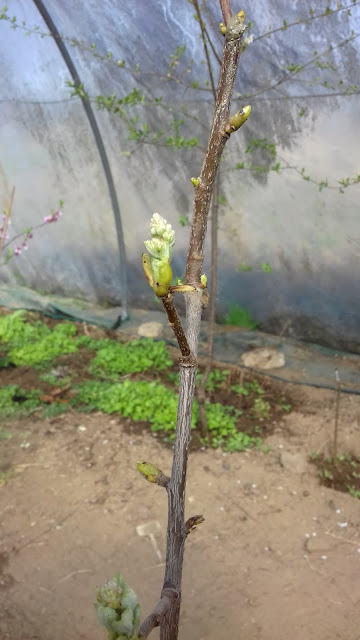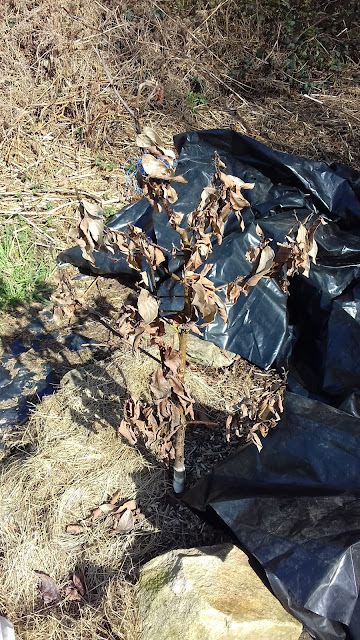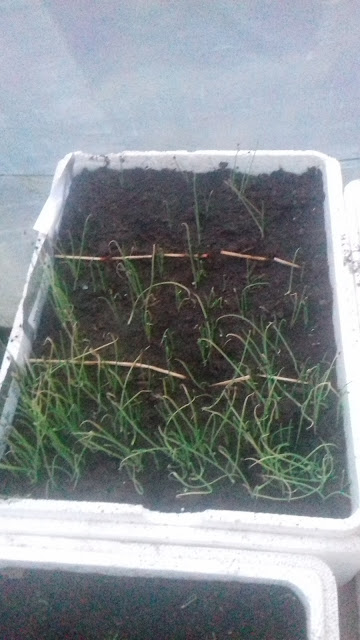
I planted a grape in my polytunnel after having seen these massive fruit in a friend's place. The variety is called Kyoho, was bred in japan and is very famous. It is the most widely grown variety in the world. I was worried that the plant might not grow but now the buds are swelling and leaves are pushing out, so i am very happy that it pulled through. I will try and let it rank up and along the upper part of the tunnel. I have another seedless breton grape that i am trying to grow outside and a grape bred by michurin for which i am still looking for a place to plant it. The michurin grape is very tough and very cold-hardy. little kyoho grape starting to grow







